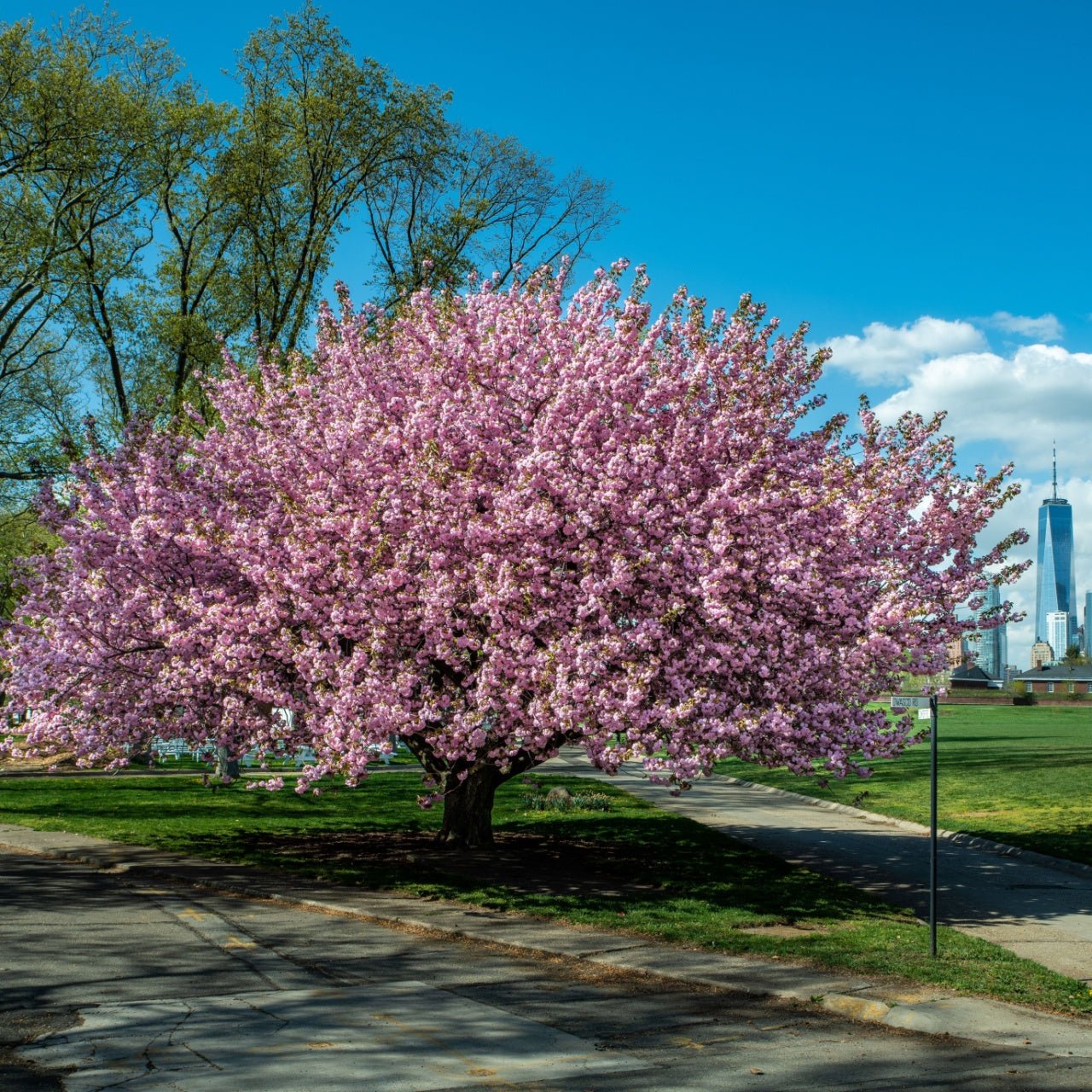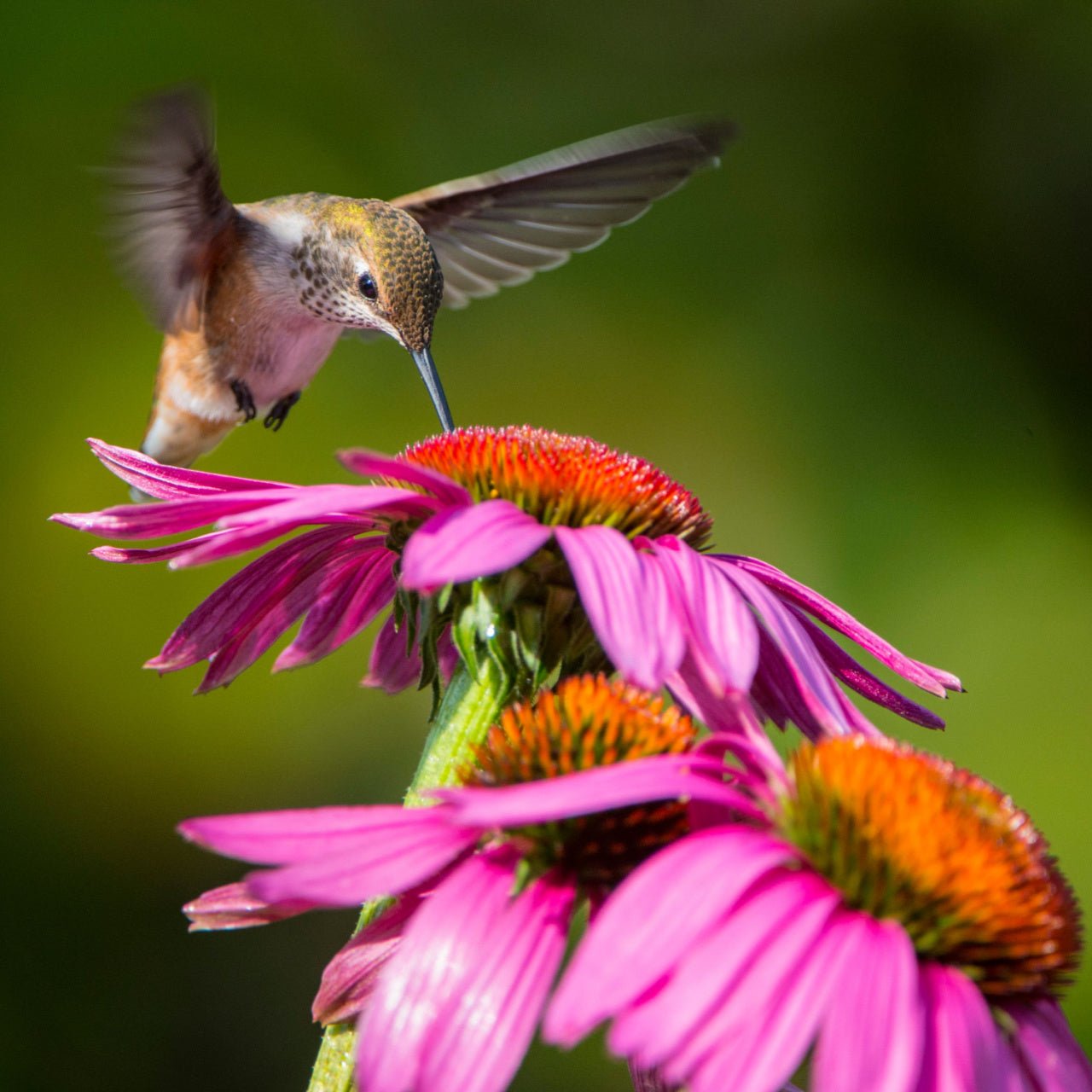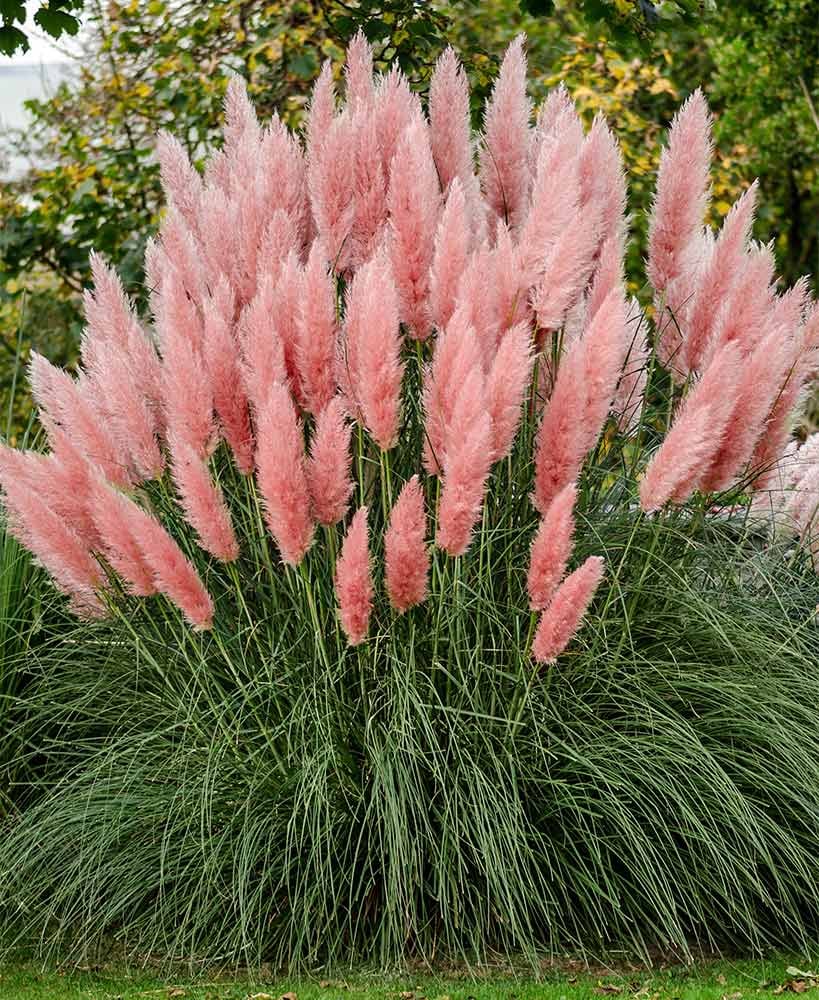
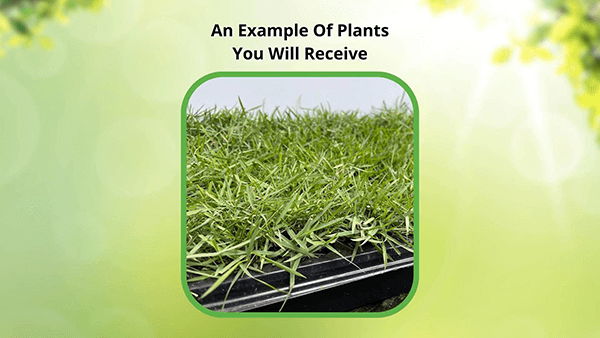
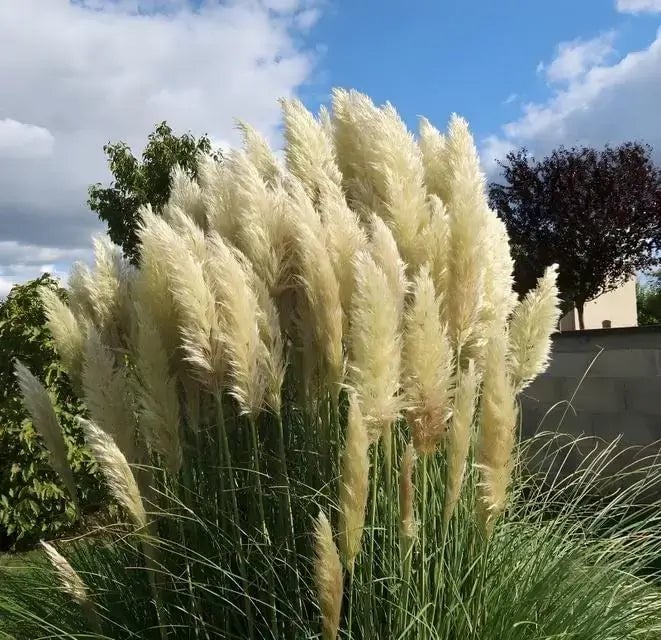

6 Pack - Pampas Grass Plugs
Dramatic focal point in landscapes
Low-maintenance and drought-tolerant
Provides privacy and windbreaks
Thrives in
ZONE 7ZONE 8ZONE 9This plant ships:
Ships Week of May 19th1 Year Guarantee on all plants
Pampas Grass Plugs - Cortaderia selloana
When it comes to landscaping, many people want a touch of elegance without the hefty maintenance costs. Pampas Grass is an ideal choice! With its tall, feathery plumes and swift growth, it's perfect for both novice gardeners and seasoned pros who want instant impact in their yards. These striking plants not only beautify your garden but also offer environmental benefits like reducing soil erosion and promoting local wildlife. If you're looking to elevate your outdoor space with minimal effort, it can be a game-changer. Let's dive into how you can get started with this stunning plant, including where to find high-quality plugs to plant in your own backyard!
They are young plants that establish quickly in your garden, providing fast ground cover and stunning visual appeal due to their tall ornamental plumes. They require minimal maintenance once established, thrive in well-drained soil, and help reduce soil erosion while supporting local biodiversity, making them an excellent choice for both beauty and ecological health in landscaping.
Ideal Planting Conditions For Pampas Grass
They flourish best in specific environmental conditions that cater to their natural growth patterns. To truly thrive, they require attention to soil type, sunlight, and watering guidelines-each of which plays an essential role in ensuring robust growth.
Soil Requirements
The journey begins with selecting the right soil. It prefers well-drained soil with a pH range of 5.5 to 7.0. Heavy clay soils or soggy areas are detrimental and should be avoided, as they can lead to root rot, sending your hard work down the drain.
To prepare your garden bed properly, you can enhance its fertility and drainage by incorporating organic matter such as compost. This not only improves the soil but also nourishes the plants, providing a solid foundation for growth. Establishing this healthy base is vital for a thriving garden.
Remember, the goal is to make an place where the roots can spread easily without suffocation from excess moisture. If you're uncertain about your soil's acidity, consider using a simple pH test kit available at garden centers.
Sunlight Needs
Once you've laid out the perfect soil, consider where you'll be placing your plants. These beauties crave full sunlight and need at least 6 hours of direct sun daily to perform their best. A sunny spot encourages healthy foliage and leads to bountiful blooms that transform any landscape into a visual delight.
In contrast, shaded areas could result in stunted growth and fewer blossoms.
Some gardeners might argue that it can tolerate partial shade; however, their vibrant life shines most brightly under the sun's embrace. While seeing some success in shaded areas isn't impossible, those looking for abundant tall plumes are better off sticking to full sunlight exposure.
Watering Guidelines
After securing the right soil and sunlight, watering becomes the next focal point in your care routine. During the first growing season, it's important to water regularly to help establish a deep and extensive root system-think of it as giving your plant the hydration it needs while it gets settled in its new home. Aim for approximately 1 inch of water per week, ensuring that the soil remains moist but not waterlogged; sogginess can weaken roots.
Once established, rest assured knowing that it demonstrates drought tolerance, requiring less frequent watering going forward. This resilience means you can enjoy their striking presence with minimal maintenance once they've rooted themselves well.
Understanding these ideal planting conditions sets you up for success when adding it to your landscape-a harmonious balance between nature's elements that seamlessly enhances your outdoor space. As we explore further, let's uncover creative ways to plant these in your design.
Landscaping Ideas with Pampas Grass
It offers a dramatic touch to any landscape with its towering plumes and lush foliage. Its unique appearance makes it a favorite among homeowners and landscapers alike, serving both functional and aesthetic purposes. One of the most effective uses for it is as a privacy screen or windbreaker along property lines. When planted in clumps, this ornamental plant can create dense, natural barriers that shield your outdoor space from prying eyes and harsh winds while also acting as a beautiful backdrop for garden features.
Pairing it with other plants can enhance your landscaping even further.
Accent Features
Consider mixing it with other ornamental plants like Miscanthus or Panicum for varying textures and heights. This blend adds depth to your garden, creating moving waves of color that transition beautifully through the seasons. The fluffy blooms of it contrast lovely against the slender blades of neighboring plants, resulting in a visually stimulating display that draws the eye.
To make an even bolder statement, create a focal point by planting single specimens in a central garden area or using them to frame pathways and entrances. Imagine walking up to your front door flanked by elegant tufts swaying gently in the breeze. The tall plumes serve as eye-catching features throughout the seasons, especially when they bloom in late summer and fall, offering moments that change with the light. If you're looking for late-season interest, these plants shine in their golden hues against early autumn backdrops.
Beyond aesthetics, it can also serve an important ecological function.
This ornamental plants provides habitat for wildlife. Not only does it beautify your landscape, but it also promotes local biodiversity by offering shelter and nesting areas for various species. By integrating it into your yard, you contribute to your personal enjoyment and environmental health.
With its dual role as a decorative choice and ecological enhancer, it is a dynamic element for any landscape design.
As we shift focus now to how best to care for these impressive plants, the right maintenance techniques will ensure they flourish robustly over time.
Maintenance Tips for Lush Growth
Keeping it healthy requires minimal yet consistent care. A crucial part of maintaining its integrity is trimming back the foliage in late winter. This practice not only encourages fresh new growth in spring but also helps reshape the plant, giving it a tidy appearance as the growing season begins. However, it's important to avoid cutting too close to the ground; doing so can damage the base of the plant and hinder its ability to flourish.
Fertilization
To ensure your it grows robustly, it's advisable to use a balanced, slow-release fertilizer at the onset of spring. A fertilizer with an N-P-K ratio of 10-10-10 will provide just the right nutrients to support lush growth without overwhelming the plant. You simply sprinkle the fertilizer around the base, following package instructions for quantity, and water lightly afterward to activate the nutrients. This step not only enhances appearance but helps develop strong roots that stabilize the plants against wind or heavy rain.
Winter Care
In regions where winter temperatures dip significantly, providing extra protection for your plants is essential. One of the simplest ways to safeguard them against freezing temperatures is by applying a layer of mulch around their base. Opt for organic materials like straw or shredded leaves-these not only act as insulation but also decompose over time, enriching your soil in the process. For those living in warmer climates, this step may be less critical; however, if there's an occasional frost warning, adding mulch could mean the difference between surviving and thriving come spring.
With these essential aspects of care in mind-regular trimming, appropriate fertilizing, monitoring for pests, and preparing for winter-you'll be well-equipped to foster healthy growth and stunning beauty in your landscape as seasons change.
Creative Decorative Uses
One wonderful aspect of it is its plumes, which can be dried for use in various indoor arrangements. This not only adds a touch of nature to your home but also offers a rustic, cozy feeling that's perfect for any decor style.
Imagine walking into a room graced by the soft, feathery plumes towering elegantly in a vase; it instantly elevates the space with its organic charm.
Floral Arrangements
For those looking to create beautiful floral arrangements, pairing it with other dried flowers like lavender or eucalyptus results in an exquisite multi-textured display. The key is to choose tall vases that showcase the height of the stalks, creating visual interest and drawing the eye upward.
Add some twinkling fairy lights around these arrangements for an extra touch of magic during evening gatherings.
Dried stalks lend beauty to arrangements and are long-lasting, making it a terrific choice for individuals who appreciate decor that requires minimal upkeep.
Event Decorations
Moving beyond personal spaces, it has found a beloved spot in event decorations, particularly at weddings. Its elegant yet natural look serves as a stunning backdrop for ceremonies and receptions.
Envision an archway adorned with its lush, or long-stemmed plumes placed delicately across tables as centerpieces - both add a breathtakingly stylish yet grounded element to your celebration.
Moreover, you can get creative with aisle decorations to guide guests through a sea of soft, billowing grass-transforming an ordinary corridor into an enchanting pathway. Consider mixing the plants with other floral elements for contrast, ensuring every detail echoes elegance while harmonizing with nature.
While exploring these decorative possibilities, keep in mind how versatile this plant can be, effortlessly enhancing both everyday and special occasions with its charm. Next, we will discover ways on how to incorporate it into current design philosophies and aesthetics.
Styling Trends
Stylish and versatile, it has surged in popularity as a darling of contemporary design. Its striking appearance not only brings nature indoors but also enhances the ambiance of any room. Integrating it can transform a space from ordinary to extraordinary.
Bohemian Decor
One of the most enchanting ways to utilize it is in bohemian-themed interiors. Imagine walking into a sunlit room where soft light filters through earthy woven textures and macramé wall hangings. By incorporating it into this aesthetic, you can achieve a warm and inviting atmosphere.
The fluffy plumes contrast beautifully with woven baskets and other natural elements. They can be displayed in oversized vases or casually arranged in smaller containers for that effortless boho vibe. Consider pairing them with earthy tones-think muted browns, greens, and creams-to emphasize their soft, billowy texture.
This lush grass isn't just for bohemian settings; it seamlessly transitions into more modern aesthetics as well.
Modern Minimalism
If simplicity is more your style, it can still take center stage in your decor through modern minimalism. In these spaces, less truly is more. Picture a sleek, monochromatic room where clean lines and minimalist furnishings prevail.
A single bouquet of it in an unassuming vase becomes a striking focal point amidst an otherwise understated environment. Its natural beauty captures attention while retaining the calmness that defines minimalism. Less clutter allows each plume to showcase its structure and elegance, drawing the eye without overwhelming other design elements.
Additionally, incorporating seasonal displays with it can add a fresh twist throughout the year.
Seasonal Displays
Embracing the changing seasons offers even more opportunities to integrate it into your home decor. Each season presents its unique charm when combined with this perennial favorite. For example:
-
Autumn: Enrich your fall aesthetic by pairing it with cozy pumpkins and colorful gourds. Their striking plumes create a delightful contrast against rich autumn hues.
-
Winter: As we celebrate the cold months, consider mixing it with evergreen branches and twinkling fairy lights for warmth during any winter gathering.
-
Spring: Finally, as blossoms awaken after winter's slumber, incorporate pastel-colored flowers alongside it for a fresh and vibrant display that embodies the spirit of spring.
The flexibility of it ensures it remains relevant through every transition-from warm fall gatherings to serene spring mornings-making it the perfect addition for those looking to refresh their space while maintaining an organic touch throughout all seasons.
In summary, Pampas Grass is an exceptional option for diverse styling trends throughout the year, combining beauty, versatility, and thematic relevance in any setting.
This Is How Your Plants Will Look upon Delivery
Bloom Season
Fall
Height at Maturity
Over 3 Feet
Care
Water Pampas Grass Plugs regularly until established, ensuring the soil remains moist but not waterlogged. Use well-draining soil to prevent root rot, and mulch around the base to retain moisture. Trim back dead foliage in late winter for fresh spring growth.
Plant Reproduction
Pampas Grass spreads via rhizomes, forming dense clumps and seeds.
Shipping date depends on the date displayed and chosen when you order from the product's page.
We only accept returns on plants verified dead. If you think your plants have died, we offer a 1 year warranty, please use this File a Claim Link to verify dead plants and start with return warranty process.





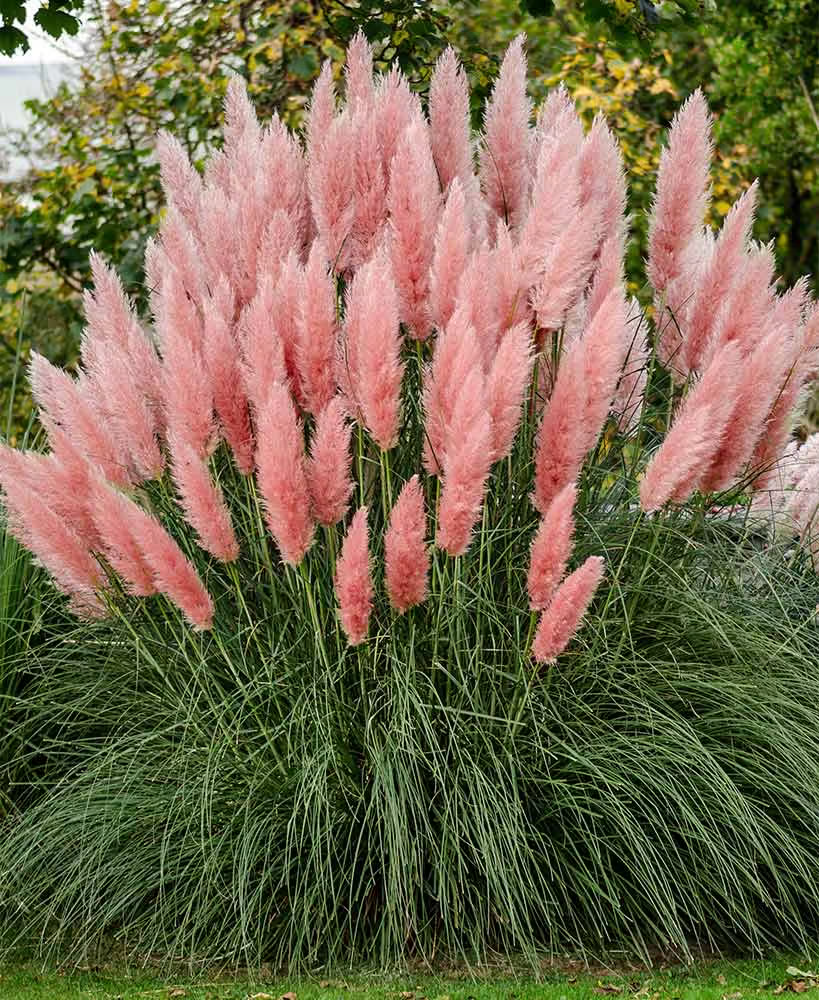
Natural Dual-Tone Effect:
The tall stems often extend above the blades, creating a stunning contrast and dual-tone appearance that adds depth and texture to your garden design.
Easy to Grow and Maintain:
Pampas Grass is known for its rapid spread and low maintenance, making it an ideal choice for gardeners seeking lush, full growth with minimal effort.
Efficient Ground Coverage:
These grass plugs quickly cover horizontal space, filling out areas for a well-established and dense look, perfect for creating a lush, green backdrop.
Stunning Ornamental Beauty:
Pampas Grass Plugs add a dramatic and elegant touch to any landscape with their tall, feathery plumes, creating a visually striking feature that enhances garden aesthetics.
Caring Tips
How do I care for my 6 Pack - Pampas Grass Plugs?
Each box contains detailed care instructions and information about your product. But here's the basics.
Care Tips
Water Pampas Grass Plugs regularly until established, ensuring the soil remains moist but not waterlogged. Use well-draining soil to prevent root rot, and mulch around the base to retain moisture. Trim back dead foliage in late winter for fresh spring growth.
Light Requirements
Pampas Grass Plugs thrive in full sun, requiring at least six hours of direct sunlight daily. They can handle part shade but may not produce as many plumes. Total sun exposure ensures the best growth and flowering.
Hardy Planting Zones
7 • 8 • 9
Header
Use this content to share information about your store and products.
Frequently Asked Questions
How often should I water my plants?
How do I know if my plant is getting too much or too little sunlight?
What should I do to prepare my plants for winter?
What are the signs that my plant needs fertilizing?
How can I prevent pests from damaging my plants?
How do I choose the right plant for my climate zone?





